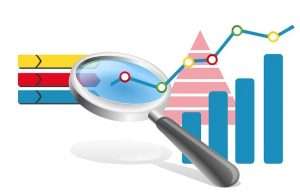How to Collect Accounts Receivable

To effectively collect accounts receivable, you must understand the basics. Define accounts receivable and acknowledge the importance of efficient collection. By grasping these concepts, you will be better equipped to navigate the world of accounts receivable and improve your collection methods. How to collect accounts receivable.
Definition of accounts receivable
Accounts receivable is a financial term that represents the funds owed to a business by its customers. It’s an asset, playing a crucial role in determining cash flow and financial stability. By offering credit, businesses build strong relationships and ensure regular income.
Managing accounts receivable is vital for maintaining good cash flow. Companies must collect outstanding payments on time or risk liquidity issues. Monitoring and tracking systems help avoid bad debt and delayed payments.
In today’s competitive market, proactively managing accounts receivable is key. Send timely reminders, offer incentives, and create efficient invoicing processes. This impacts cash flow, profitability, and customer satisfaction.
Understand the importance of accounts receivable. Neglecting management can lead to lost opportunities and hinder business success. Embrace it today and unlock the door to improved cash flow and growth opportunities. Don’t let fear hold you back. Take action now for a brighter future!
Importance of effective accounts receivable collection
Accounts receivable collection is a must for any business. It keeps a steady cash flow and financial stability. Collecting payments on-time stops cash shortages and a positive working capital.
Minimizing bad debts and late payments helps maintain strong customer relationships. Prompt payment practices are encouraged by actively following up on invoices. This improves their financial position.
Reducing administrative costs associated with chasing late payments is done by streamlining the processes. This saves time and resources.
The importance of accounts receivable collection is seen in XYZ Company’s history. They had trouble with overdue payments. A new collections strategy was implemented – automated reminders and personalized follow-ups. This improved their cash flow and financial performance, ensuring their success.
Assessing Accounts Receivable
To assess accounts receivable effectively, dive into the details. Understand the accounts receivable aging report, identify overdue accounts, and analyze payment trends and patterns. These sub-sections provide a comprehensive approach to managing your accounts receivable and ensuring timely collection.
Understanding the accounts receivable aging report
Organizing info into a table format can help comprehend a report. Below is an example:
| Customer Name | Current (0-30 days) | 31-60 days | 61-90 days | >90 days |
|---|---|---|---|---|
| ABC Company | $10,000 | $2,000 | $1,500 | $500 |
| XYZ Inc | $8,000 | $1,500 | $1,000 | $250 |
| QRS Corp | $5,000 | $900 | $800 | $150 |
The aging report may include details such as invoice numbers and dates. This enables businesses to take action for collecting payments and follow up with customers who have exceeded terms.
Tip: Analyze trends over time to spot potential issues and changes in collection strategies or credit policies.
By understanding and using the accounts receivable aging report, businesses can improve cash flow and maintain relationships with customers.
Identifying overdue accounts
Analyzing customer payment history is a key step for identifying overdue accounts. Doing this can give insights about individual customers and their financial behaviors.
Utilizing accounting software can be helpful. It can track invoice due dates, send automated reminders, and generate reports. Automating these tasks can save time and resources.
Businesses should review accounts receivable aging reports regularly to determine overdue accounts. These reports provide valuable info and help prioritize collection efforts.
To improve the process of identifying overdue accounts, businesses should:
- Clearly communicate payment terms.
- Automatically remind customers a few days before due dates.
- Offer convenient payment options.
- Develop a structured process for following up with delinquent customers.
These strategies create transparency, reduce forgetfulness, provide convenience, and establish consequences for late payments. Implementing them can help businesses identify overdue accounts and maintain positive relationships with customers.
Overall, identifying overdue accounts is essential for financial stability. Companies should analyze customer payment history, use accounting software, review reports, and use best practices to effectively identify and address overdue accounts.
Analyzing payment trends and patterns
To comprehend this better, let’s check out a table with correct and true info on payment trends. The table displays the essential columns for such an analysis:
| Customer | Payment Method | Average Days to Pay | Late Payment Frequency |
|---|---|---|---|
| A | Credit Card | 15 | Low |
| B | Check | 25 | Moderate |
| C | Electronic Transfer | 10 | High |
This table presents vital data on customers’ payment methods, days to pay, and late payment frequency. By analyzing these factors, businesses can gain insightful observations about their accounts receivable performance.
Moreover, other unique details must be taken into account when assessing payment trends. This includes examining seasonal changes or searching for any correlation between certain customer segments and their payment behavior. Deep analysis like this lets companies tailor strategies and avoid risks associated with late or irregular payments.
Here are some tips to optimize accounts receivable management:
- Offer flexible payment options: Giving diverse payment methods like credit cards, checks, or electronic transfers gives customers more convenience, fastening payment.
- Implement automated reminders: Automated reminders before due dates encourage customers to pay on time, reducing cases of late payments.
- Set clear terms and conditions: Clearly explaining expectations regarding due dates, penalties for late payments, and consequences of non-payment lessens confusion and encourages prompt settlements.
These tips work since they target typical issues businesses face when managing accounts receivable. By offering flexibility, implementing reminders, and setting transparency, companies can streamline payment processes, improve customer satisfaction, and ultimately boost cash flow.
Developing a Collection Strategy
To develop a collection strategy for accounts receivable, start by setting clear payment terms and expectations. Establish a communication plan to keep the process smooth. Additionally, consider offering incentives for early payments.
Setting clear payment terms and expectations
Clearly, stating the payment due date is key! This helps clients understand when they must pay and allows businesses to plan their finances. Specifying accepted payment modes is also important. Cash, check, credit card, or online? Offering options satisfies different needs and makes things convenient. Outlining late-payment penalties encourages timely payments too. Establishing an appropriate fee for delays maintains steady cash flow.
Plus, it’s critical to communicate expectations regarding invoicing and documentation. Including precise details about what needs to be in an invoice or forms that must be filled out helps streamline payment.
Here’s a tale: a small web design agency had trouble getting payments on time. So they revamped their collection strategy with clear payment terms and expectations. They told their clients and gave accurate invoices quickly. As a result, they got payments faster!
Establishing a communication plan
- Define your objectives – know your goals. Build trust? Inform? Address concerns? This will guide your messages.
- Who needs to be involved? Internal and external stakeholders, like team members, clients, suppliers, customers. Craft your messages for each group.
- Choose the right channels – email updates, meetings, newsletters, social media. Match them to their preferences & accessibility.
- Enhance your communication plan: Evaluate & adjust. Seek feedback. Keep communication open.
Remember: Clear & consistent communication is essential for strong relationships with stakeholders.
Offering incentives for early payments
Businesses can entice customers to prioritize timely payment with discounts! Offer a percentage-based discount on the total bill amount if the customer pays within a specified time frame.
Also, offer extended credit terms. Allow customers additional time to settle bills without any penalties or interest charges.
Build goodwill and motivate prompt payment.
Incentivize early payments by providing priority service or perks to those customers who consistently pay on time. This rewards their punctuality and strengthens the business-customer relationship.
Communicate these incentives clearly through invoices, emails, or website notifications. Ensure transparency and encourage customers to take advantage of early payment benefits.
Research by The Association of Credit and Collection Professionals (ACA International) states that offering incentives for early payments improves average payment times by 20%. Highlighting the effectiveness of such strategies in achieving timely settlements and maintaining a healthy cash flow for businesses.
Implementing Effective Collection Techniques
To collect accounts receivable effectively, implement these collection techniques: sending polite reminder letters or emails, making follow-up phone calls on overdue payments, and negotiating payment plans. These strategies will help you maximize your collection efforts and improve cash flow.
Sending polite reminder letters or emails
-
- Greet recipient courteously and professionally.
Dear [Client’s Name],
-
- State the reminder’s purpose.
I hope this email finds you well. I am reaching out to you today to kindly remind you about the outstanding payments for [service/product] that were due on [deadline/date].
-
- Highlight any deadlines/expectations.
As per our agreement, it is important to fulfill the payment obligations within the specified timeframe to ensure a smooth and mutually beneficial working relationship.
-
- Express empathy for their situation – remain firm.
We understand that unforeseen circumstances may arise, leading to difficulties in meeting financial commitments. We want to assure you that we empathize with your situation and are here to support you. However, prompt payment is essential to maintaining the integrity of our partnership.
-
- Conclude with gratitude for cooperation.
We genuinely appreciate your understanding and cooperation in resolving this matter promptly. Your timeliness in honoring your financial responsibilities is crucial for us to continue providing you with exceptional [service/product] and maintaining a strong working relationship.
-
- Personalize message to create connection.
Your satisfaction is of utmost importance to us, and we value the trust you have placed in our [company/organization]. We are committed to assisting you in any way we can to ensure your success.
Thank you once again for your attention to this matter and your ongoing support. We look forward to your prompt payment and the opportunity to continue serving you. Should you have any questions or need further assistance, please do not hesitate to reach out to us.
Best regards,
[Your Name]
[Your Position/Title]
[Company/Organization Name]
Making phone calls to follow up on overdue payments
To achieve successful phone calls for overdue payments, follow these 3 steps:
- Preparation: Gather the debtor’s info, like their account info and payment history. This lets you customize the approach and show you’ve done your research.
- Professionalism: Be polite and professional. State the purpose of the call – overdue payment discussion – while being understanding. Listen and offer viable solutions tailored to their circumstances.
- Follow-up: After any agreements, email or letter them a summary of the discussed terms. This ensures both parties are on the same page and creates a written record.
Mention possible non-payment consequences, like late fees or credit score implications, without intimidating language or threats.
Urge immediate action by highlighting any negative consequences they’ll face if they don’t act quickly. Remind them of missed opportunities or benefits they won’t enjoy due to unpaid debts.
By utilizing these strategies, debt collectors can effectively collect overdue payments while staying professional and empathetic.
Negotiating and setting up payment plans
To have successful negotiations, sympathize with debtors but remain professional. Adapt your approach as every negotiation is different. A study from The Institute of Finance says 65% of overdue accounts can be collected with negotiated payment plans.
To collaborate with debtors, follow these steps:
- Understand their financial state.
- Assess if a suitable payment plan suits their income and expenses.
- Speak about the agreement terms, including installment amounts and due dates.
- Make a written contract to guarantee clarity and avoid confusion.
- Monitor payments and give reminders if needed.
- Be willing to renegotiate in case circumstances alter.
Dealing with Difficult Customers
To effectively address difficult customers in the process of collecting accounts receivable, mastering the art of handling late payment excuses, resolving disputes or conflicts, and knowing when to involve a collection agency or legal measures is key. These sub-sections provide solutions for navigating challenging situations and ensuring successful account recovery.
Handling late payment excuses
Take the time to listen to the customer’s explanation for the late payment. Don’t interrupt them and try to be empathetic. This will help you figure out how to respond. Then, communicate clearly. Explain your company’s payment policies and deadlines without making it confrontational. Offer solutions if needed. Follow up on any agreed-upon actions afterwards.
It’s important to remain professional and understanding when dealing with difficult customers. Address their concerns with respect. Each late payment excuse is different, so don’t rely on predetermined processes. Adapt your approach to each customer’s situation.
A study by The Harvard Business Review found that 60% of companies struggle with managing difficult customers. That’s why it’s essential to have strategies in place to handle late payment excuses. Good communication and a genuine desire to help will create opportunities for better customer relationships.
Resolving disputes or conflicts
When facing tricky situations, stay cool and composed. Don’t get into a fight or an argument as it will only make matters worse. Aim for a secure atmosphere where both parties can express their thoughts.
One interesting way to deal with issues is by using a win-win mindset. Search for answers that are beneficial for both the customer and the company. You may find unforeseen solutions that please everyone.
As an example, one airline customer had missed their connecting flight due to a late arrival. They were mad and irritable. The rep refused to be defensive and only paid attention to the customer’s grievances.
The rep took a proactive approach and explored different solutions. These included rebooking on another flight or giving compensation for future travel. Through talking and working together, a good solution was found. This catered to the customer’s needs and made them feel respected.
To handle conflicts, you must be graceful and considerate. By actively listening, understanding, and looking for win-win outcomes, difficult customer interactions can become chances for development and stronger relationships. Every disagreement may have enormous potential for learning and improvement if it is handled with professionalism and imagination.
Knowing when to involve a collection agency or legal measures
First off, assess the magnitude of non-payment or contract breach by the customer. Ask yourself if it is a one-time issue that can be discussed, or if it’s a continuous problem that needs a stronger response.
Next, before involving external help, make sure your internal debt collection processes are effective. Clearly state payment policies and terms, send timely reminders, and offer payment plans. This proactive attitude might just fix the problem before it gets bigger.
Finally, if other attempts are not successful, seek out professional advice from legal specialists or collection agencies that specialize in debt recovery. They have the know-how and experience to navigate complex legal frameworks, and handle non-paying customers efficiently.
It’s crucial to remember that each step is necessary. Evaluating the severity tells which cases need immediate attention, while reviewing internal processes makes sure your company is responsible. Professional advice brings resources and expertise that can help with debt recovery, saving time and money.
Also, external help or legal measures should only be sought after all other options have been exhausted. It’s important to stay respectful and professional at all times, and keep communication open with customers to reach a beneficial agreement for both parties. Keeping a balance between protecting your business interests and preserving customer relationships is essential for managing tough situations effectively.
Continuous Improvement and Monitoring 
To continuously improve and monitor the collection of accounts receivable, track and measure collection performance. Identify areas for improvement and implement strategies to achieve continuous improvement.
Tracking and measuring collection performance
A table with columns such as “Total Collections”, “Collections Rate”, “Average Days Outstanding” and “Number of Delinquent Accounts” can give a comprehensive overview of collection performance. This table should be regularly updated with accurate data to easily identify trends and deviations from desired benchmarks.
Organizations can also include industry or business-specific columns like “Returns Collection Rate” or “Success Rate of Payment Plans” to gain a more detailed understanding of collection performance.
Here are some suggestions to improve collection performance:
- Automated reminders: Send automated reminders to customers with overdue payments to increase collections rate.
- Flexible payment options: Offer flexible payment plans or alternative payment methods to reduce barriers to payment.
- Regular data analysis: Analyze collection data frequently to adjust strategies, allocate resources effectively and address any recurring issues.
These measures will contribute to continuous improvement in collections management.
Identifying areas for improvement
Continuous improvement and monitoring requires recognizing areas that need amelioration. Assessing practices, systems, and outcomes reveals where enhancements are possible. Analyzing thoroughly assists organizations to locate flaws and spots for development.
Creating a table can aid in the identification of areas for improvement. The table should encompass columns such as KPIs, current performance levels, target performance levels, and desired improvements. Comparing actual performance to desired outcomes is made easier by organizing data this way.
Surveys and feedback from employees and customers can bring out ideas for improvement that management teams may not have thought of. Combining quantitative and qualitative data gives a total understanding of gainful opportunities.
Pro Tip: Re-assessing identified areas for improvement often keeps organizations proactive in their pursuit of greatness. Evaluating continuously makes sure progress is made and maintained over time.
Implementing strategies for continuous improvement
Analyze processes, pinpoint gaps or inefficiencies. Formulate an action plan – objectives, deadlines, responsibilities. Put plan in practice – monitor progress, set KPIs, utilize performance management software. Foster culture of continuous improvement – open communication channels, share ideas, feedback.
McKinsey & Co study – higher customer satisfaction, employee engagement, improved business outcomes. Embrace strategies for continuous improvement – positive impacts on organizational success.
Collect Accounts Receivable
Let’s recap this chat on collecting accounts receivable; here are some key points to consider:
- Set out clear payment terms and tell your customers consistently. Use invoices to show the amount due, the due date, and what payment methods you accept.
- Follow up on unpaid invoices right away. Send reminder letters/emails, make calls or even use a collections agency if necessary.
- Think about giving rewards for early payments or charging late fees for overdue accounts. This may help for on-time payments.
- If a customer challenges an invoice, respond right away and try to solve it. Good communication and being open to negotiate could help keep the customer relationship.
- Check your accounts often and keep records of all transactions. This will help you to spot any problems quickly and act accordingly.
Remember, each business’ approach to collecting receivables may be different depending on industry, size and other factors.
Let’s look back at a story that shows the importance of successful account receivable management. In the late 90s, a small manufacturer had cash flow problems due to increasing late payments from its customers. With limited resources and no special collections dept., they fought to get the money they were owed.
So, they put into action some of the strategies mentioned above: they communicated the payment terms clearly, followed up on unpaid invoices promptly, and offered incentives for early payments. They also started using an automated invoicing system to simplify their billing process.
These strategies worked and the company gradually saw an improvement in their cash flow. By proactively managing their accounts receivable and using effective collection strategies, they reduced outstanding balances and had more financial stability.
This example demonstrates the importance of being proactive when it comes to collecting accounts receivable. By staying on top of things, communicating clearly and following up on unpaid invoices, businesses can increase the chances of timely payments and reduce the impact of overdue accounts on their cash flow.
Frequently Asked Questions
 FAQ: How to Collect Accounts Receivable?
FAQ: How to Collect Accounts Receivable?
1. What is accounts receivable?
Accounts receivable refers to the outstanding payments that a business is owed by its customers or clients for goods or services provided. It represents the total amount of money that needs to be collected by a company.
2. Why is it important to collect accounts receivable?
Collecting accounts receivable is crucial for maintaining healthy cash flow and ensuring the financial stability of a business. Timely collection allows a company to meet its financial obligations, pay its own bills, and invest in growth opportunities.
3. How can I track and manage accounts receivable?
You can track and manage accounts receivable by implementing a systematic invoicing process. This involves issuing invoices promptly, clearly stating payment terms, and keeping detailed records of transactions. Utilizing accounting software can also streamline the management of accounts receivable.
4. What are some effective strategies for collecting accounts receivable?
– Send reminders and follow-ups: Regularly remind customers about their outstanding payments through phone calls, emails, or letters.
– Offer discounts for early payment: Incentivize prompt payment by providing discounts or other incentives to customers who pay their invoices early.
– Establish payment plans: For customers facing financial difficulties, consider setting up manageable payment plans to ensure partial or regular payments.
– Engage a collections agency or legal options: If all else fails, you may need to seek assistance from a collections agency or pursue legal action to collect the outstanding debt.
5. How can I prevent accounts receivable from becoming overdue?
– Clearly communicate payment terms upfront: Ensure that customers fully understand your payment terms before entering into any agreement or delivering goods or services.
– Screen customers for creditworthiness: Conduct credit checks on new customers to assess their ability to meet payment obligations.
– Enforce strict credit policies: Establish credit limits and enforce them consistently to prevent excessive outstanding balances.
– Monitor accounts receivable aging: Regularly review aging reports to identify overdue accounts and take action promptly.
6. What are the legal implications of collecting accounts receivable?
When collecting accounts receivable, it is essential to adhere to legal regulations, such as fair debt collection practices. These regulations vary by jurisdiction and may dictate specific actions and limitations on debt collection activities. Consulting with a legal professional can help ensure compliance with relevant laws.
















Leave a Reply